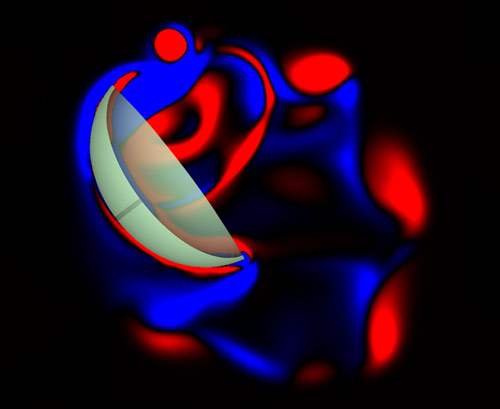Professor's research has implications for soft robotics design

Working with a group of marine biologists, engineers and a MacArthur fellow, Dr. Alexander Hoover, assistant professor in the Department of Mathematics, discovered a new biomechanical constraint in jellyfish that has potential use in the design of soft robotics.

Despite having a relatively simple nervous system, jellyfish are a model organism in biomechanics in part because they manage a broad range of motion from a rather primitive set of distributed pacemakers. These pacemakers can yield a range of different motion, which allows for complex behaviors, such as jellyfish swarms and daily vertical migrations of the water column.
Using 3-D computational fluid dynamic models, along with experimental recordings of a microelectronics embedded live jellyfish and flow visualization, the researchers found that jellyfish motion depends on the speed of its muscular activation wave. Examining jellyfish as they turn, they found that initiating a turn was dependent on the activation wave's speed relative to the bell's material wave speed. The material wave speed, which emerges from the elastic wave equation, is dependent on the flexibility of the bell. Setting the activation wave speed near the bell's material wave speed yielded the strongest turn, and experimental recordings suggest that this is the case in living animals.
These findings, which were published in the Proceedings of the National Academy of Sciences, demonstrate an undescribed neuromechanical constraint on jellyfish, which is important to the actuation of biomimetic vehicles and tissue-engineered pumps as well as the biology of locomotion in other flexible swimming animals.
